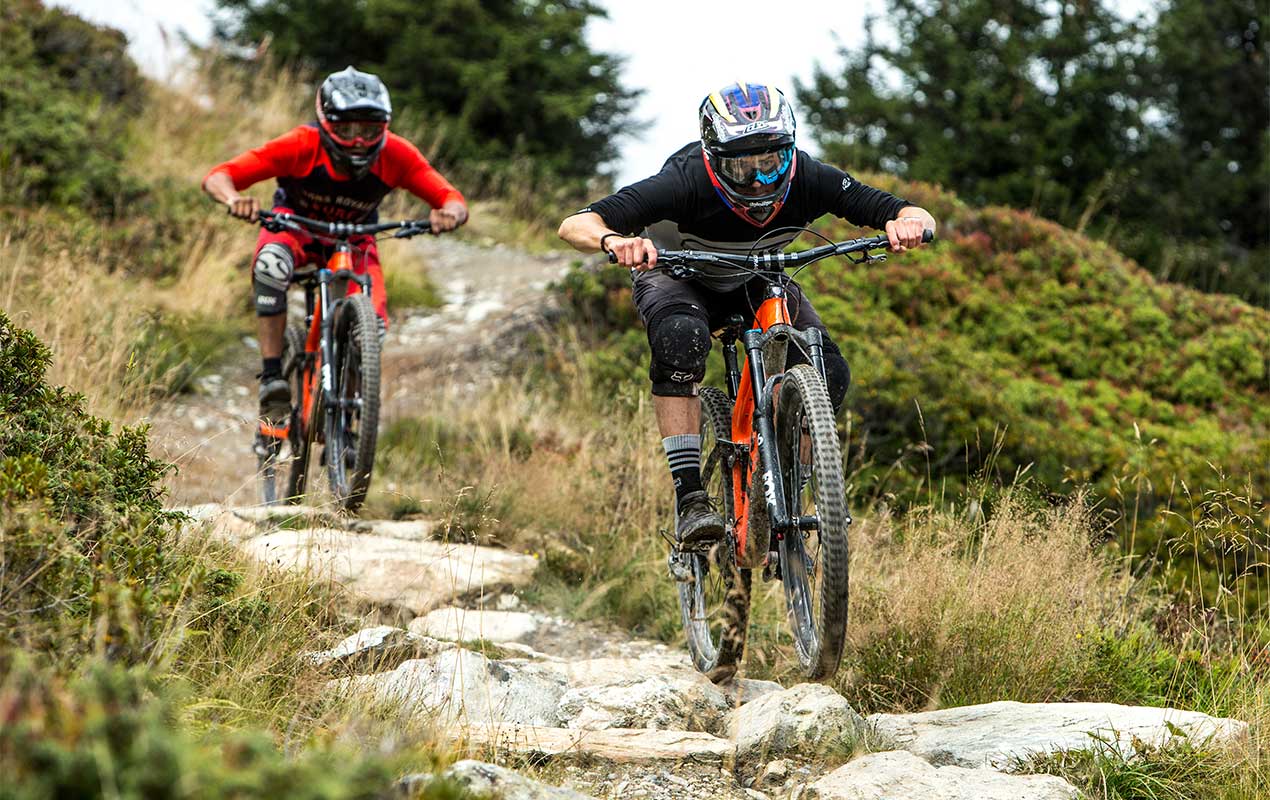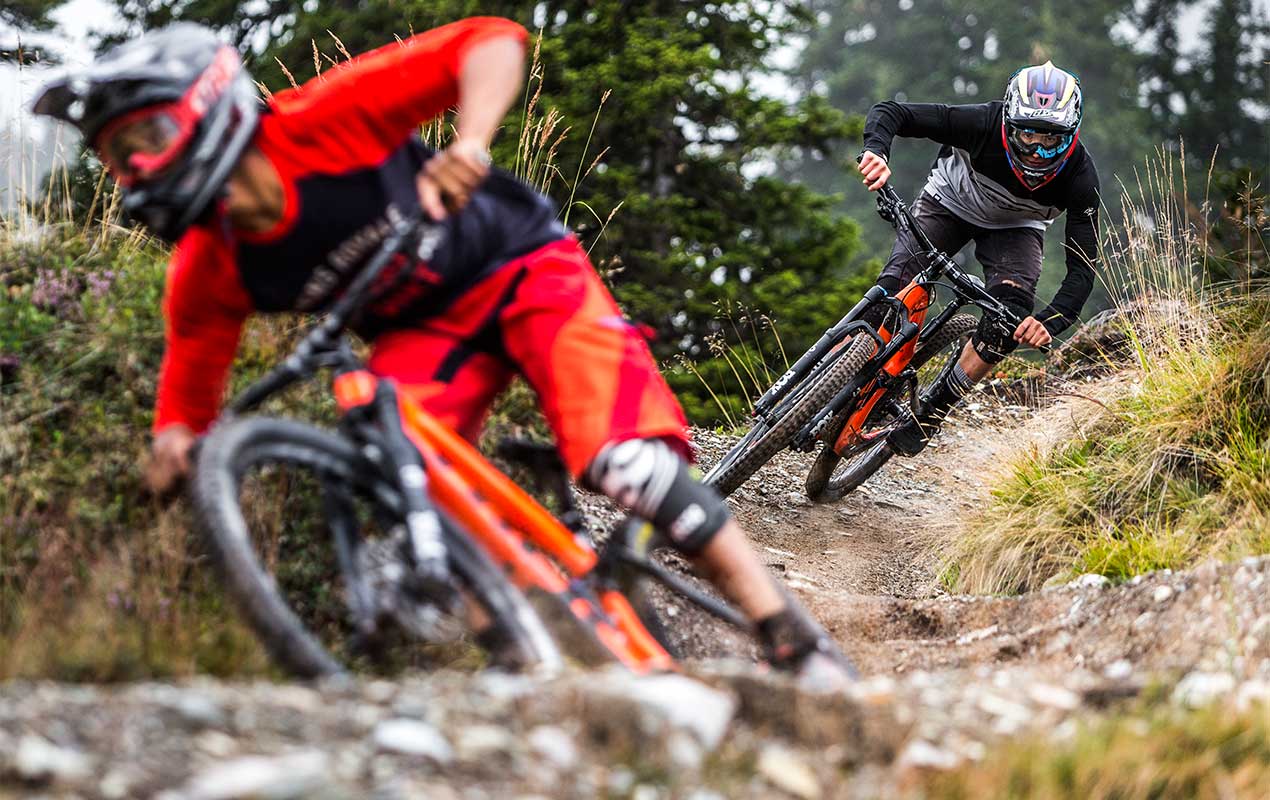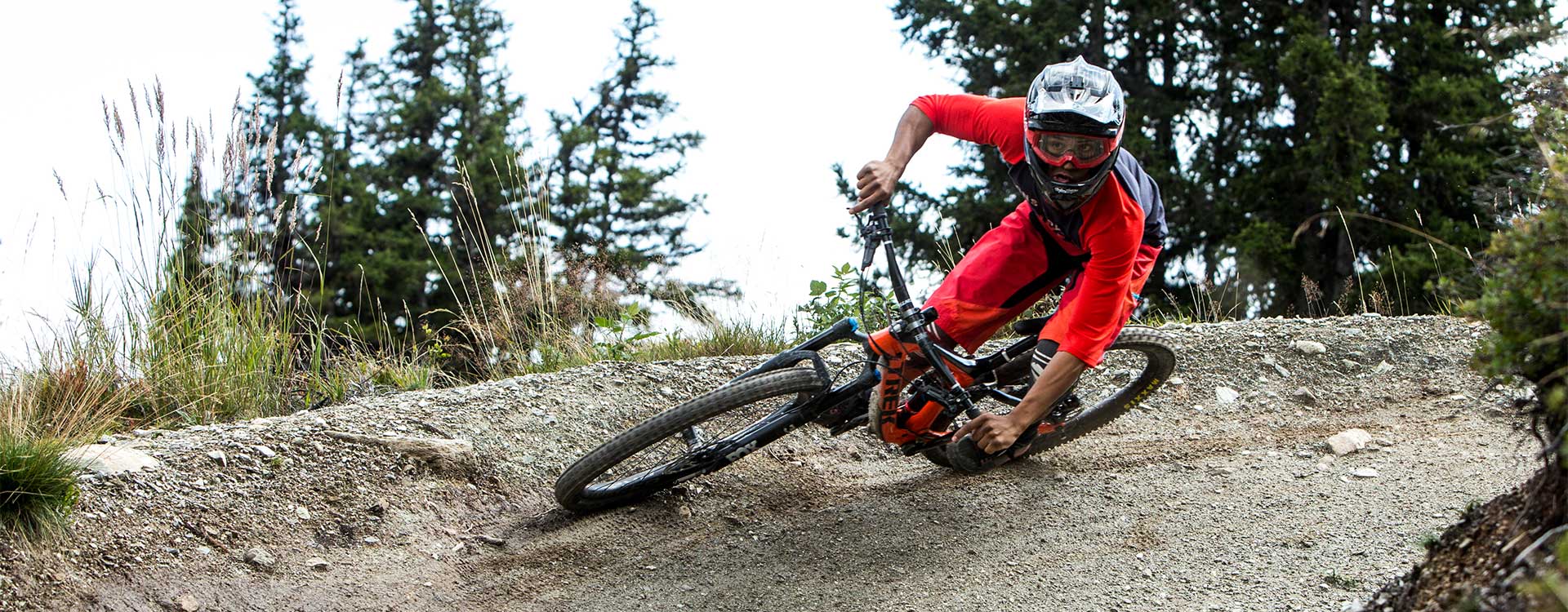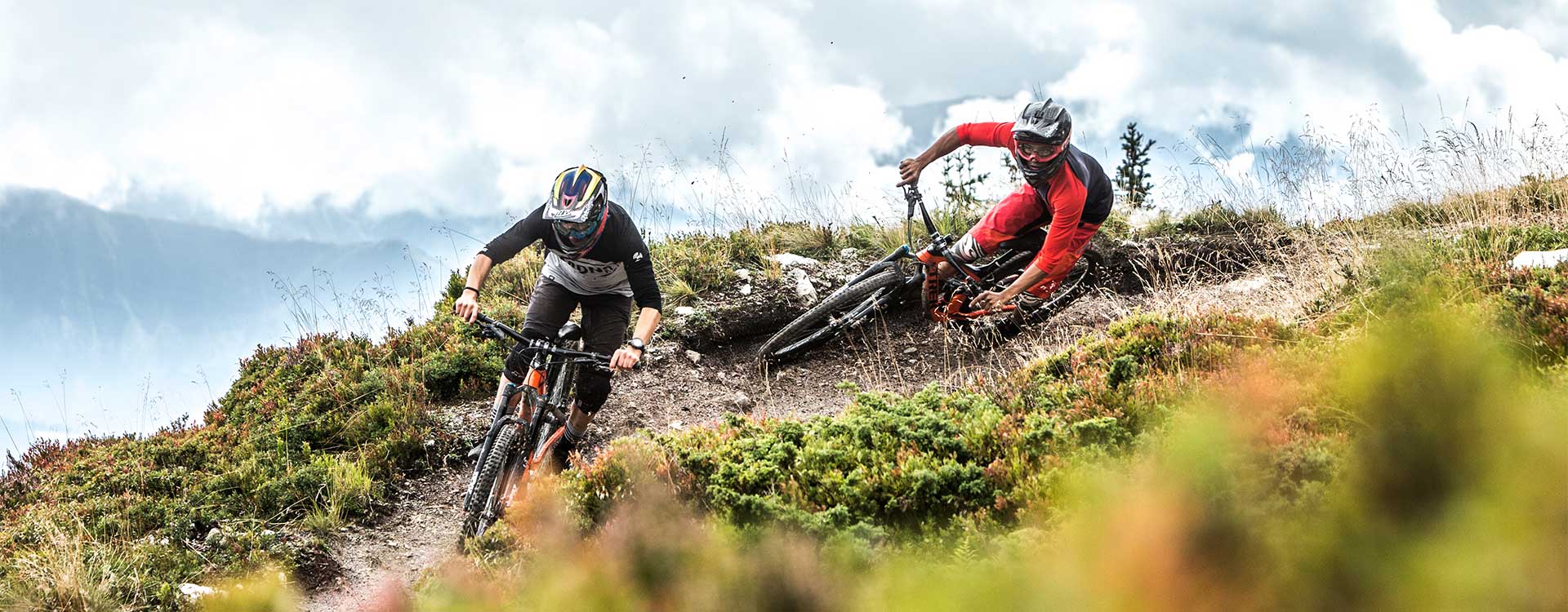Specials
Downhill equipment: everything you need to know about protectors and such like
Rocky trails, bumpy areas and high speed. When it comes to downhill, it’s the more, the better. To ensure you have a safe and fun experience under these extreme conditions, there are a few things you should bear in mind when choosing your downhill equipment. From the right mountain bike to the appropriate downhill protectors, as well as more tips and tricks about mountain bike equipment, you can find all the information here. This will ensure you are well prepared for your next attempt at the Never End Trail. And if you also want some local professional advice for your bike equipment, our experts are on hand to help you in our rental stores.
The right mountain bike
When choosing the right downhill equipment, the first thing is to find the right mountain bike. Downhill mountain bikes and modern enduro bikes are specially designed for the harsh conditions and high speeds experienced on the trails. If you’re taking on a downhill trail for the first time, it’s definitely recommended to rent a downhill bike. With an all-mountain bike or hardtail mountain bike, you’ll only have half the fun on the downhill trails. A downhill bike is also safer on this type of terrain. Why is this?
- A downhill bike offers far more stability and smoothness due to the flat steering angle and low centre of gravity and is well able to handle high speeds. You will also tire less.
- A double crown fork at the front and a powerful shock absorber at the rear wheel provide the ultimate suspension for blocked paths and jumps. In addition, greater spring deflection is more forgiving in the case of riding errors.
- The gears are held on the chain ring by means of a chain guide, which prevents the chain from falling off. An additional bashguard protects you from roots and rocks on the trails. This prevents damage to the chain ring, so you can enjoy more time on the trails rather than wasting it on carrying out repairs.
- Bike equipment also includes special downhill tyres. They are wider than normal tyres and are made from a stronger materials, so they can withstand roots and rocks on the trails. Under these conditions, the rims of freeride or all-mountain bikes can sometimes get ‘tacoed’ or buckled. You are also much more likely to get a flat tyre using normal tyres than using downhill tyres.
- When braking, too, everything is geared towards the needs of downhill riders. Large brake discs offer greater and better controllable braking force. The large calipers withstand heat better and have more braking force than conventional disc brakes.

Downhill equipment: helmet and goggles
To ensure both a safe and fun experience, you should make sure you get the right downhill equipment. A good helmet is the most important thing. We strongly recommend that you use an integral, or full-face, helmet. A conventional mountain bike helmet does not adequately protect you from the high forces experienced in case of a fall. Downhill helmets are designed like motorcycle helmets, but are a lot lighter and better aerated.
A special pair of protective goggles for going downhill also complements your mountain bike equipment. They capture dirt on wet days in particular, ensuring better visibility and more enjoyment. The goggles also protect you from stones or rocks thrown up from the trail. If you don’t want to purchase a helmet or goggles, you can rent them from the LAAX Rental outlets at the base stations in Flims and Laax.
Downhill protectors
If you’re travelling at high speed on technically challenging trails, you need to have the right downhill protectors. They protect you from injuries such as bruises, scrapes and broken bones, and go well with your downhill equipment. Bike protectors are available for practically every part of the body, with the most common ones being for the knees, elbows and back. There are also entire safety jackets for the upper body.
We also recommend using a neck brace to prevent injuries to the neck and spine. When choosing MTB protectors, it is better to go for a slightly tighter size to prevent the protectors from slipping during riding. You can also rent downhill protectors from the LAAX Rental outlets at the base stations in Flims and Laax.

Mountain bike equipment: gloves, shoes and clothing
As well as downhill protectors, your downhill equipment should also include gloves, shoes and clothing.
- Gloves: reinforced padding on the back of the hand and thumb ensure increased safety in the case of falls or striking branches.
- Shoes: strong bike shoes with a flat sole ensure good grip on the pedals. In this case, the downhill equipment and conventional bike equipment are the same.
- Clothing: as riding downhill can result in a fall or two, wear clothing that you don’t mind damaging. As with any sporting activity, breathable materials are recommended.


